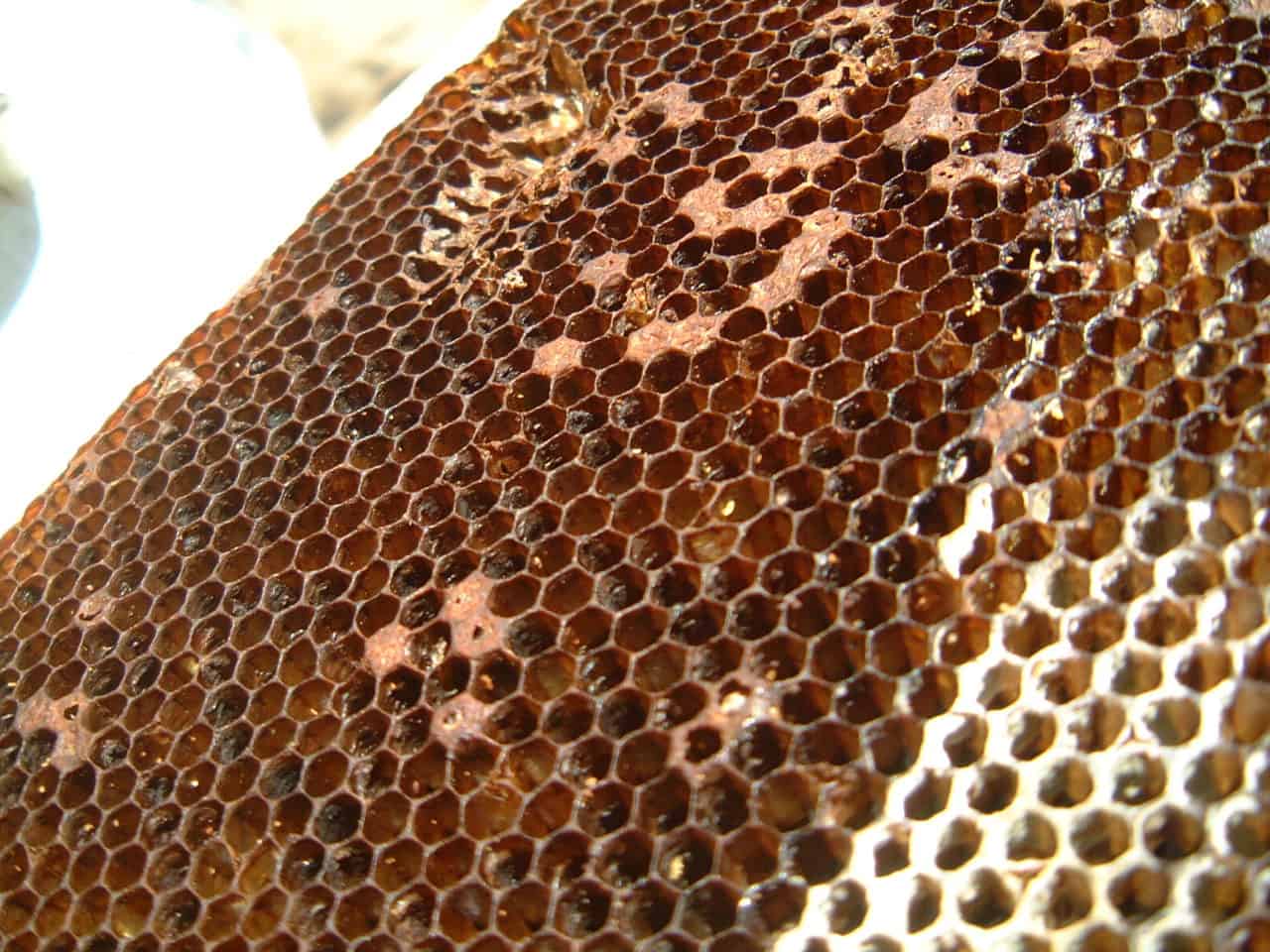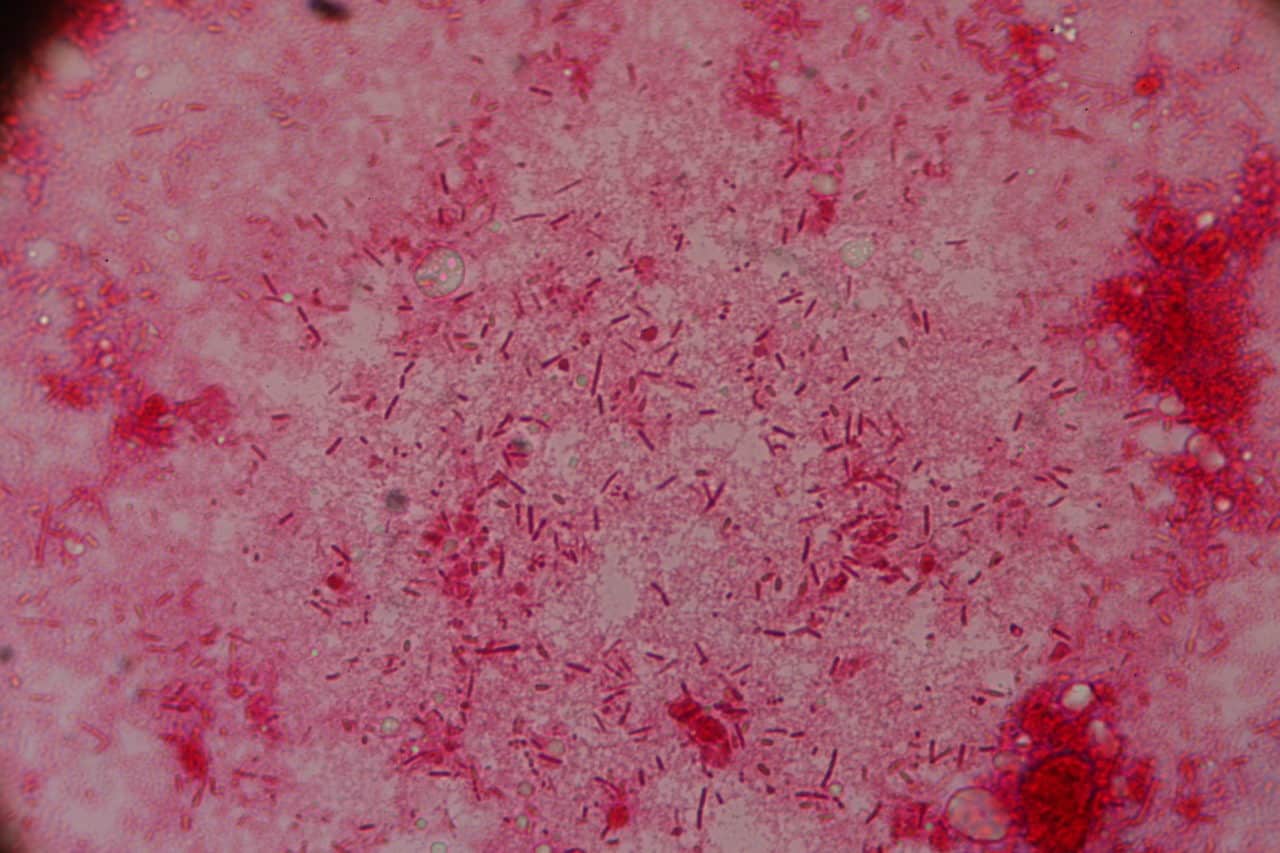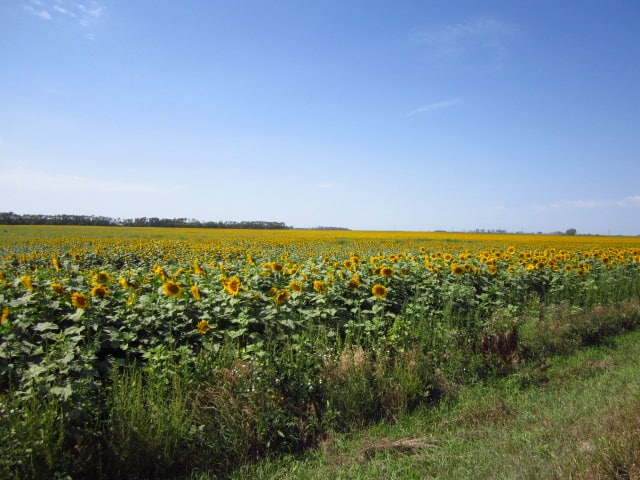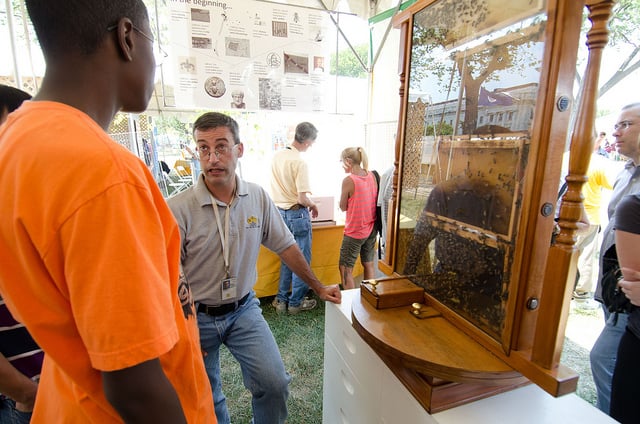For clarification, using a blacklight is supposed to help you see if there are AFB scales in the bottom of a cell. The blacklight will make other things made of protien glow as well, so always double check that what you are seeing is a scale and not shaped like something else. An AFB scale should only be on the bottom of a cell (see picture). Be sure to look at the comb under a normal light as well, and if you are still not sure then ask or you can even send in a picture!
Year: 2012
Examining Bacteria From Colonies with Foulbrood Symptoms
Microscopy is a useful tool to diagnose honey bee problems. While working on some content for eXtension.org, I helped record the following video. These bacterial spores where found in a comb showing symptoms of American foulbrood disease. Paenibacillus larvae With Brownian Motion From a Honey Bee Colony Video description: Spores of the causative agent of American foulbrood disease in honey bee colonies are shown here. Paenibacillus larvae spores (seen here at 1000x) display brownian motion when the microscope slide is prepared with the hanging drop method. Acknowledgements: Organized, prepared slide: Michael E Wilson, University of Tennessee; videography & microscopy: Ernest Bernard, University of Tennessee; Video…
Phorid Fly (Light Trapping)
The past few months I have been trying to capture honey bees that are infected with Phorid Flies in the Chico, CA area. So what is a Phorid Fly? It is a fly commonly referred to as the humpback-fly because of its appearance. Previously the fly was known to parasitize bumble bees and paper wasps but has now transferred host and is able to reproduce using the honey bee (Apis mellifera). It has been termed the “Zombee” because once parasitized, the honey bee behaves irregularly, taking flight at night and dying away from the hive. More information on this name and the fly can be…
Beekeeper Reports
It’s incredible how fast time can pass when you are enthralled in something new and exciting. I have been in California for more than a year and it seems like yesterday that I was standing in my parent’s driveway saying good bye to my mom, dad, and brothers as Rob and I loaded up his car for our move out west. A lot has happened in a year and making the move to the west coast has been one of the most eye opening experiences of my life. It’s been challenging, rewarding, frustrating, and fun but most importantly it’s given me the opportunity to grow…
Spotlight on Gum Plant
North Dakota landscapes, both farmed and fallow, are golden-hued with the onset of sunflower, goldenrod and gum plant bloom. These three plants belong to the family Asteraceae, commonly called the Aster or Sunflower Family. While sunflower and goldenrod are well-known late summer sources of forage, gum plant also provides a source of nectar and pollen for bees. Native to North America, Grindelia species occur throughout the lower forty-eight with the exception of the southeastern states. Grindelia squarrosa, or curlycup gum plant, occurs in Great Plains rangeland and is the most wide-ranging species in the genus Grindelia. G.squarrosa is a biennial or short-term perennial with peak…
Antlions (Myrmeleontidae)
Previously I wrote a blog about an insect known as a “Wormlion.” I suspected this insect to be an Antlion at first. I then figured that not many people knew what an Antlion was so I figured I would blog about them. Antlions are in the order Neuroptera which in English translates into “nerve-wings.” An Antlion is the larval stage of the insect; these are also referred to as “doodle-bugs.” They call them doodle-bugs because when you place these insects on sand or loose dirt, they will crawl backwards making a distinguishable trail and eventually burrow down into the medium. In the wild you can…
2012 Smithsonian Folklife Festival
The Smithsonian Folklife Festival is an annual festival held on the National Mall in Washington, D.C. that celebrates cultural diversity and traditions. The USDA Bee Research Lab was asked to participate this year as part of the theme “Campus and Community”. The festival commemorated the 150th anniversary of USDA and land-grant universities. Abraham Lincoln signed the Morill Act in 1862 which, in part, initiated research partnerships between USDA and public universities (not unlike the Bee Informed Partnership!) A group of us from BIP were lucky enough to be able to participate in the festival on June 29th: myself, Karen Rennich, Heather Eversole and Jennie Stitzinger.…
State of Beekeeping in Northern CA:
I have been living in Northern CA for just over a year now and from what I’ve been told the weather in the past year has been atypical. Last spring and early summer was late and unusually wet which led to one of the best star thistle crops in years. Because of the rain the star thistle was able to out compete the grasshoppers and produce more than enough flowers to keep the bees busy. Most beekeepers in the area were able to make a surplus of honey and I think the abundance of available forage during the summer months may have helped curb pests…
Tropilaelaps Mites
Among the many diseases and pests that the APHIS National Honey Bee Survey samples are analyzed for is the exotic parasite, the Tropilaelaps mite. These mites are native to tropical Asia and are a serious threat to the honey bee. While they naturally use the giant honey bee (Apis dorsata) as their host, Tropilaelaps mites have easily transferred to the European honey bee and other Asian honey bee species; however fortunately for us, for the time being, they are not known to be found in the US. Pictured here, the mites are reddish brown in a shade that is very similar to that of Varroa…
Sorting Insect Specimens
In previous blogs I have talked about catching, pinning, labeling and storing insects. I am going to talk about how I process the samples to conserve space. This process is simple but takes time. I started out with a bug case with a few different series of bees and other insects. There is an image of the case I started with above. I go through the case and write down all the location labels and how many insects are in each series. If there are specimens in the series that have plant information I will write that down as well. One such example would be…



